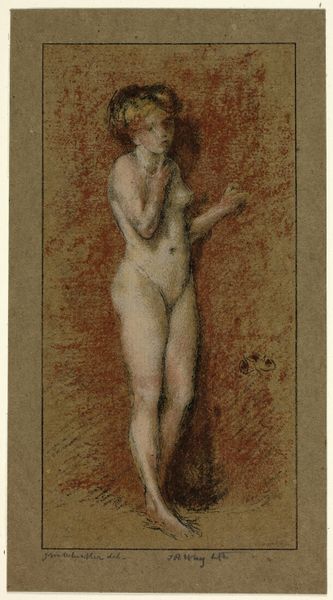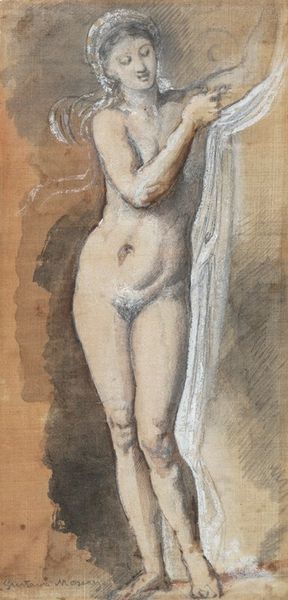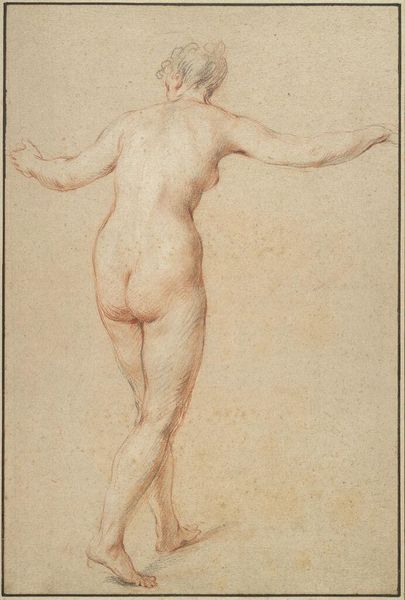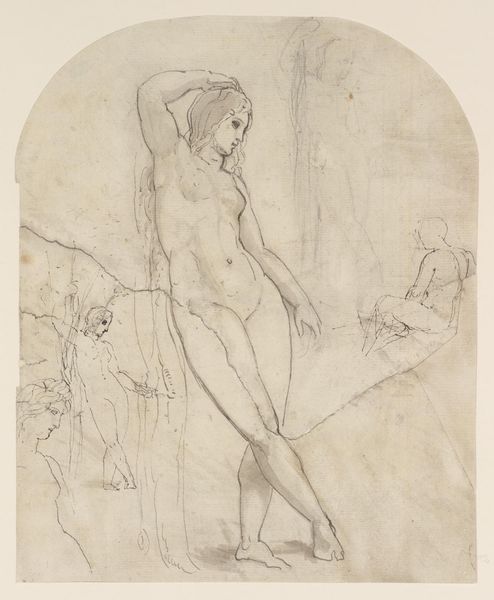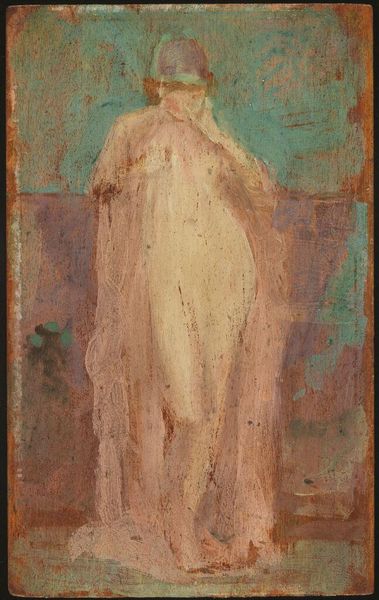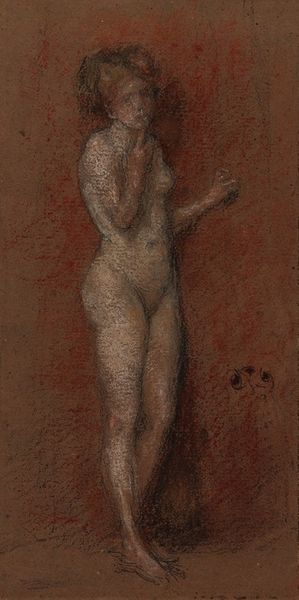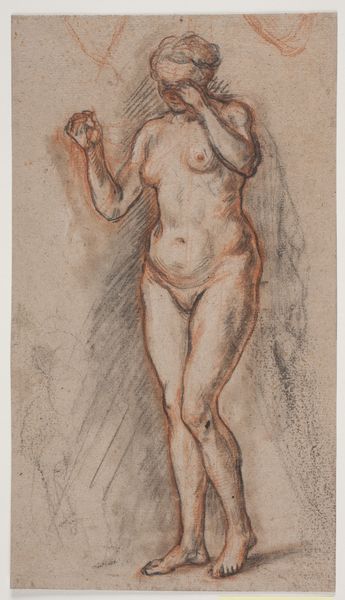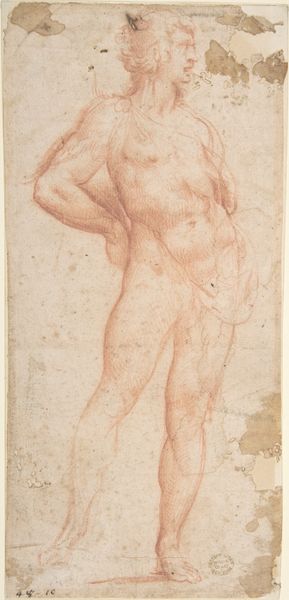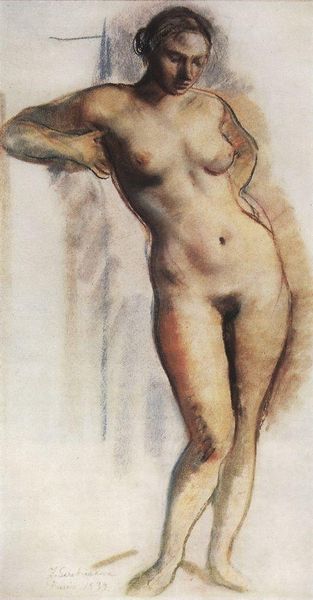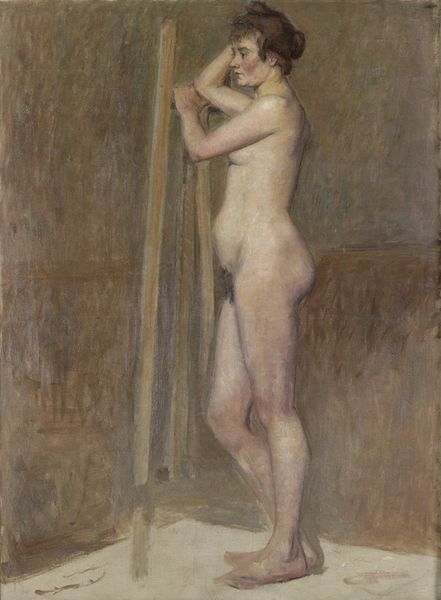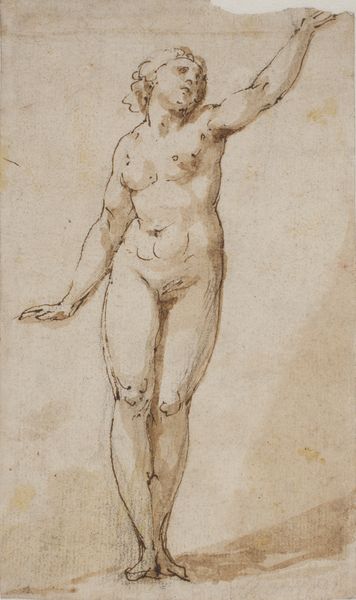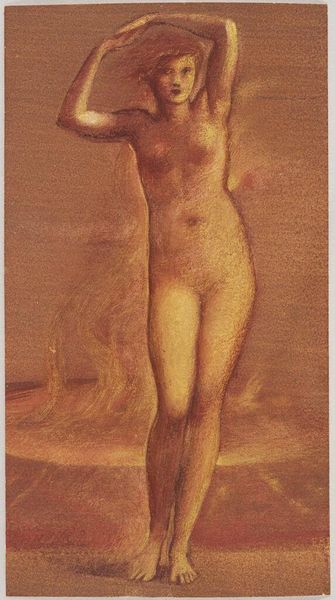
drawing, charcoal, pastel
#
portrait
#
drawing
#
charcoal drawing
#
figuration
#
female-nude
#
coloured pencil
#
pastel chalk drawing
#
symbolism
#
charcoal
#
pastel
#
academic-art
#
nude
Dimensions: 20.32 x 11.43 cm
Copyright: Public domain
Curator: Stepping up close to this pastel drawing, one immediately feels the model's slightly aloof composure. I’m also intrigued by how lightly James McNeill Whistler suggests form. Editor: Yes, Whistler’s "Blue and Violet II" is quite striking, crafted around 1892, capturing a female nude using charcoal and pastel on toned paper. What is most remarkable for me is its relationship to the symbolist movement; the ephemeral feel and slightly abstracted features. How does it connect to your fascination with symbols and imagery? Curator: Absolutely. Whistler avoids traditional, realistic representation. Instead, he uses the nude form as a symbol—a figure removed from any narrative or context, which allows for multiple readings. It becomes almost archetypal, evoking themes of vulnerability, beauty, and the passage of time, much like the symbolist poetry of the time, hinting at deeper truths without stating them explicitly. Editor: Precisely. Whistler, as a savvy participant in the art world, would have certainly seen how the artistic circles of his time used academic or classical subject matter to negotiate new forms of artistic expression and new avenues for public engagement. But I am curious, are there particular symbolic resonances you detect? The colours perhaps? Curator: Well, the blue and violet hues could evoke a sense of melancholy or spiritual reflection. These cooler tones, juxtaposed against the warm paper, create an emotional duality. The ethereal treatment of the figure, with almost no clear lines or hard edges, encourages viewers to project their emotions onto the form. Editor: And there’s a distinct rejection of conventional portraiture isn't it. No societal markers or specific narrative. I see the figure situated outside the expected socio-cultural narratives associated with female portraits of the era. Curator: Agreed, her anonymity invites introspection. In a sense, the lack of overt symbolism paradoxically allows for more personal and subjective interpretation, shifting from societal representation to something more intrinsic. Editor: I see what you mean, it’s art that's interested in stripping back, in suggestion rather than declaration, and by doing so perhaps it implicates the viewer more directly. Curator: Exactly! It reminds us of the enduring human impulse to find meaning and emotion in the simplest of forms. Editor: Indeed. Whistler certainly encourages a quiet contemplation on beauty, feeling, and the human condition.
Comments
No comments
Be the first to comment and join the conversation on the ultimate creative platform.
